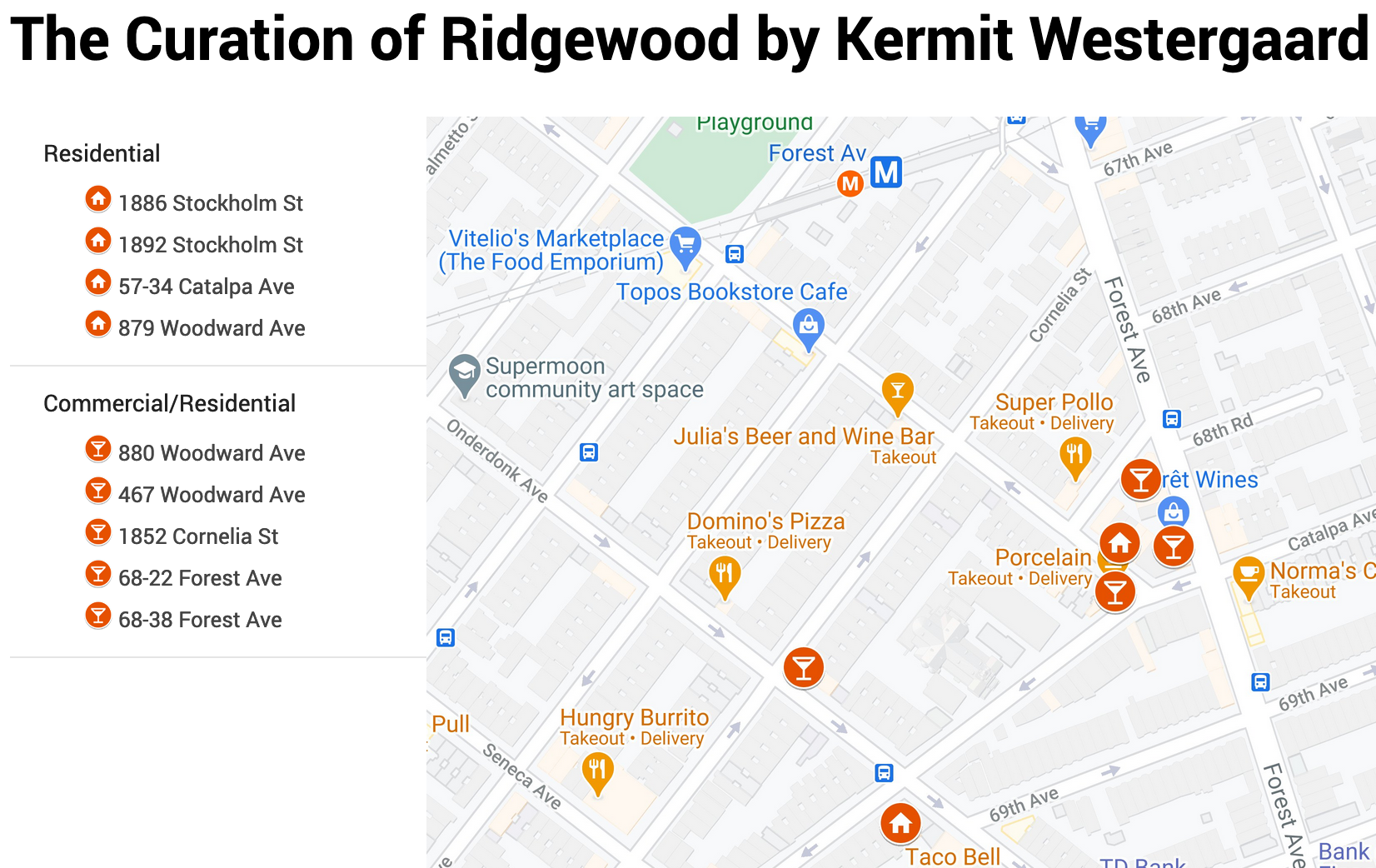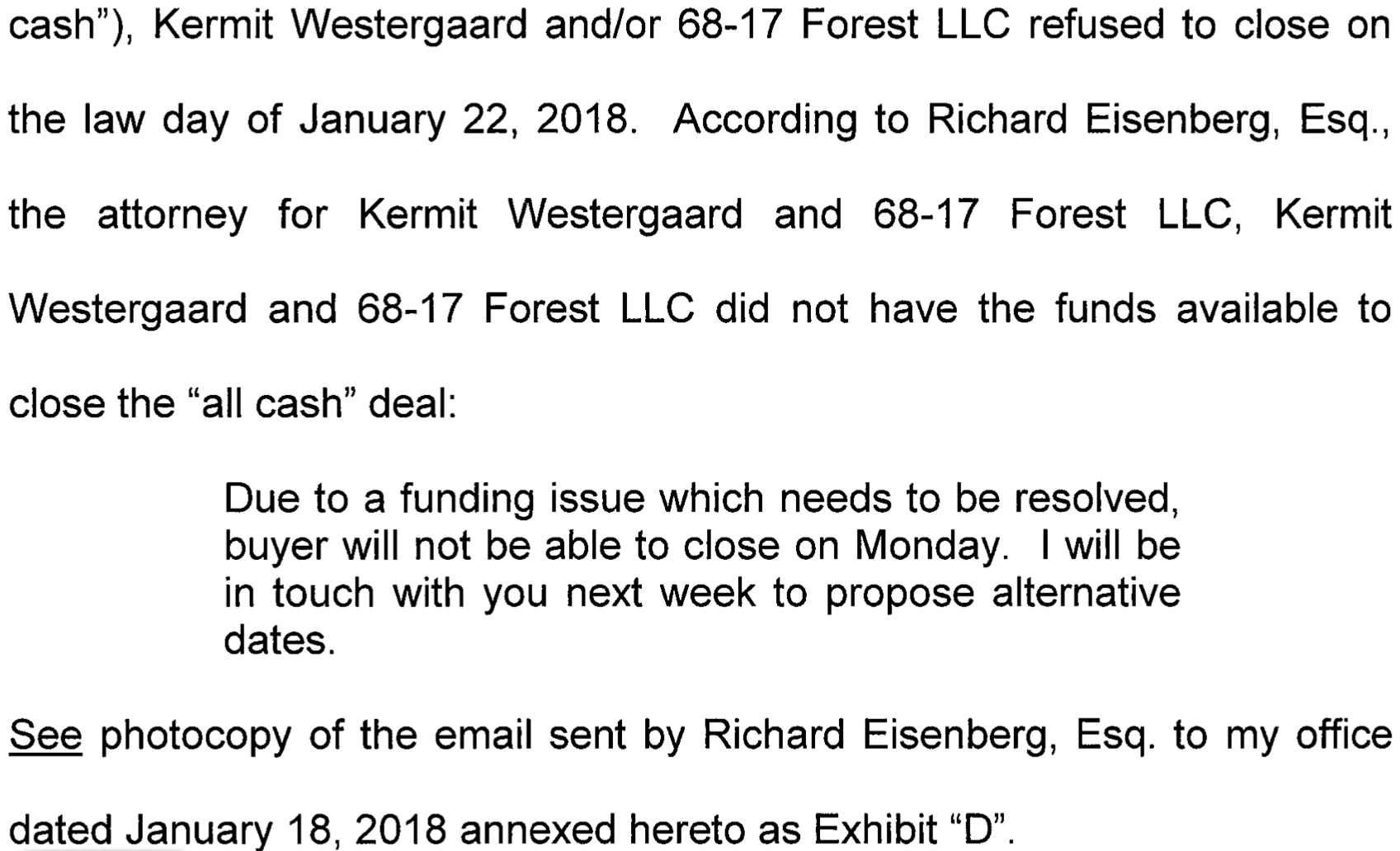
Ridgewood has gone through two waves of gentrification. The first wave is exemplified by the likes of powerful neighborhood stakeholders such as Paul Kerzner, who operates a real estate company and is the former president of the Ridgewood Property Owners and Civic Association and also sits on our local community board, CB5. In a 1983 New York Times article that talks about the renaissance of Ridgewood, Kerzner seems eager to make Ridgewood a household name.
“But in the last several years, and increasingly in recent months, change has been coming even to Ridgewood. Community leaders such as Mr. Kerzner, who dreams of sidewalk cafes and a B. Dalton bookstore on Myrtle Avenue, want to open the doors and bring in new families with new names, new ways and new money.”
This article celebrates the victory of his campaign to win historic designation status that has since made it possible to landmark 990 two-story brick rowhouses that now currently go for over $1 million. Former councilmember Elizabeth Crowley is quoted in an article from 2014 as saying, “Preserving historically significant neighborhoods is important for today’s New Yorkers and for future generations to understand their cultural heritage.” With property values skyrocketing within the landmarked properties of our neighborhood, one begs to question, “Who are we preserving these homes for?” For people like Paul Kerzner and his friend Ted Renz, another powerful stakeholder in the neighborhood who runs the Myrtle Avenue Business Improvement District, which lobbies to attract more national brands to our commercial strip and has considered expanding its reach, it’s about bringing in “new families with new names, new ways and new money” as noted in the New York Times article from 1983. Instead of distancing ourselves from the segregationist past of our district, our neighborhood stakeholders seem to want to keep us from moving forward to create neighborhoods that are livable for everyone of our neighbors.
These powerful neighborhood stakeholders have opened the floodgates for real estate speculators and property developers to prey on our neighborhood and now we’re experiencing a second wave of intensified gentrification. Among the developers drawn to our neighborhood by profit opportunities are Kermit Westergaard and his partner Steve Maharam. Westergaard and his wife, Azadeh, are featured in a New York Times article from 2008 that profiles the couple’s journey from Manhattan to Ridgewood, where they purchased their first rowhouse, you guessed it, in part of our historic district. So now we know who Paul Kerzner and Ted Renz were trying to attract.

Here is just a snapshot of some of the properties connected to the Westergaards. You’ll see a concentration of new businesses such as Sundown Bar, Foret Wines, Porcelain and the newly opened Rolo’s—all businesses that one might consider high-end or upscale and perhaps 10 years ago might have seemed out of place. Nowadays, this is just a manifestation of Kermit Westergaard’s vision for the neighborhood.
In a 2018 interview with the owners of Sundown Bar, one of Westergaard’s commercial tenants at 68-38 Forest Avenue, John Ortiz talks about meeting him.
Ortiz says, “Yeah he’s curating the neighborhood with buildings and tenants. [Laughing.] I met him through a mutual friend and we hit it off. It happened quickly.” Further on in the interview they talk about getting a late start to their opening, because of issues with the Department of Buildings.
Ortiz goes on:
“Yeah, the landlord had taken on a lot of projects, and if there’s one thing off the department of buildings hits you with that. I think it had something to do with the pipes. There were tenants upstairs at the time too, and maybe that was causing some trouble, but that’s pretty common.”

The tenants he was referring to were tenants on Section 8, tenants with disabilities, and tenants who then lost their homes because of this vision that Westergaard has for Ridgewood. This seems to be a vision that does not include working class and immigrant tenants. The “trouble” that these tenants were causing was them fighting hard to remain in their homes.
This assault on our neighborhood should not go unnoticed or unchecked. In another example of this greed, Westergaard, according to court records, had been in contract negotiations to purchase the building at 6817 Forest Avenue, which houses H & A Party Place. The owners, a Latino couple which has owned the property for decades, had agreed to sell to Westergaard, who promised an “all cash” deal. The couple had vacated the building ahead of the closing date, but that closing date never came. They had to sue in court to break the contract so that Westergaard would not have any claims over their property.

We cannot continue to let this blatant disrespect of our long-term neighbors go unchecked. If you are a tenant in one of Kermit Westergaard’s buildings, contact us if you would like to join our campaign at ridgewoodtenantsunion at gmail dot com.